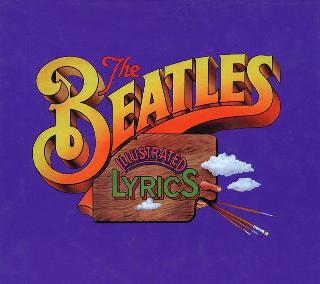Index
Home
Vorige
Good Day Sunshine
Composer(s) : Lennon and McCartney
Year : 1966
Chords/Tabs: Good Day Sunshine
Notes On "Good Day Sunshine" (GDS)
Copyright 1989 Alan W. Pollack
All Rights Reserved
I was personally surprised to analyze "Good Day Sunshine" and discover that
what I'd been thinking of for years as a fancy change of meter in the refrain
section actually isn't there for the most part; with the exception of
the coda, the meter is a solid 4/4 throughout, and what feels like a change
of meter is actually a s-l-o-w syncopation. "Oh ?", you say.
Change of Meter Dispelled
To get right to it, the refrain section ("Good day sunshine ...") is a
deceptively simple six measure phrase in "straight" 4/4, and this is how I
believe it is to be parsed. The first two measures like so:
Beats: |1 2 3 4 |1 2 3 4|
Accents: > > >
Words: Good Day Sun shine (daa-de-da-de)
Chords: B F#
A: V-of-V V-of-(V-of-V)
The next two measures are a repeat of the above followed by this:
Beats: |1 2 3 4 |1 2 3 4|
Accents: > > >
Words: Good Day Sun shine I take a...
Chords: E7
V
- We essentially have eight beats divided into a repeating pattern of
3 + 3 + 2. This is a type of syncopation you're actually rather familiar
with, but you've probably seen it in much faster tempos. For example, a lot
of jazz riffs played in even eighth- or sixteenth-notes are accented in
this 3/3/2 manner. Closer to home, you have the harpsichord-like intro to
"Because".
- Preceding this refrain are four full measures of a plain E chord (actually
just an open fifth instead of the complete chord). This intro, tapped out in
an almost mechanical four-to-the-bar, on the one hand, provides contrast with
what follows, but it also seems like a hint from the composer not to be fooled;
if you're interested in trying to count through the syncopated refrain, you'll
find that the intro is quite helpful in getting yourself firmly in the 4/4
groove before the turbulence starts. (Literally get up and march around the
room, counting aloud if it helps!)
- The meter isn't the only thing that almost eludes our grasp in this
refrain; the key is also equivocal at this point, and is not settled until
the verse begins. Unless proven otherwise, we would assume from the opening,
that the key of the song is going to be B rather than A as it later turns out.
At any rate, onwards.
The Verse
In contrast to the refrain, the verse is comparatively straightforward. Note
both the contrast provided by the return to an unequivocal 4/4 beat and the key
of A major, as well as the beautiful economy provided by a recycling of all
(and with the exception of the A chord, no more than) the chords used in the
intro. The verse is turned into a full eight measures by a repeat of the
following:
|A F#7 |B7 |E7 |A |
A: I V-of-(V-of-V) V-of-V V I
The Break
The first verse is followed by another six measure refrain. The consistent
use of the "rat-ta-ta-tat" triplet figure in the snare drum to punctuate
the last two beats of measures 2 and 4 of each refrain from here to the
end of the song is a choice detail; note the use of "stereo drumming"
here -- probably a simple overdub. This sort of repeat of a background
figure starting only in the second verse or refrain is a Beatles trademark
going all the way back to those "Do Dah Doos" in "Do You Want to Know A Secret."
Moving on, we get next a second eight measure verse. In an unusual move,
the second four measures of this verse are in the key of D and are presented
as a solo for piano. In other songs we certainly have seen guitar solos in
this same architectural position, but in this case, both the modulation and
brief, half-verse duration of the solo are out of the ordinary.
The key switch to D is done as a classic pivot. The A chord in measure
four is first heard as I in A major, but retrospectively is understood as
a punning V of D Major.
This section is followed by another refrain and a third eight-measure verse,
musically identical to the first.
Beware of the Coda
The third verse is followed by a final pair of refrains and an "outro", making
for a longer than usual coda.
In these two immediate repetitions of the refrain we actually do get a
break in the 4/4 meter for the first time; a tremendous illustration of
the secret art of knowing when to avoid a foolish consistency. The break
in the meter occurs in measure six (refer back above); i.e., the second
measure of the sustained E chord is only three beats!
But the real frosting on the cake is what I've called the outro. Instead
of something more obvious like a third repeat of of the refrain going into the
fade-out, we are treated to the harmony taking an enigmatic half-step
upward (to an F7 chord), and the vocal arrangement suddenly being refracted
into a series of cascading echoes.
Granted, GDS contains no exotic instruments, tape loops, or drug references,
but nonetheless, this song in its own quiet, feel-good way amply demonstrates
by such details as this coda, the sort of willingness to experiment, both with
musical syntax and with recording techniques, which is often glibly said to
characterize the _Revolver_ period.
... And moving from the ridiculous to the sublime, what do you make of that
funny bit of muttering from Ringo in the final verse on the words "she feels
good"; yet another clue or just a bit of troublemaking ?
Regards,
Alan (awp@mirror.tmc.com)
---
"They tried to fob you off on this musical charlatan,
but *I* gave him the test." 092089#11
Copyright (c) 2000 by Alan W. Pollack
All Rights Reserved
This article may be reproduced, retransmitted, redistributed and
otherwise propagated at will, provided that this notice remains
intact and in place.
Ook op Revolver:
(c) 2024 Serge Girard


 (c) Alan Aldrigde, The Beatles Illustrated Lyrics
(c) Alan Aldrigde, The Beatles Illustrated Lyrics